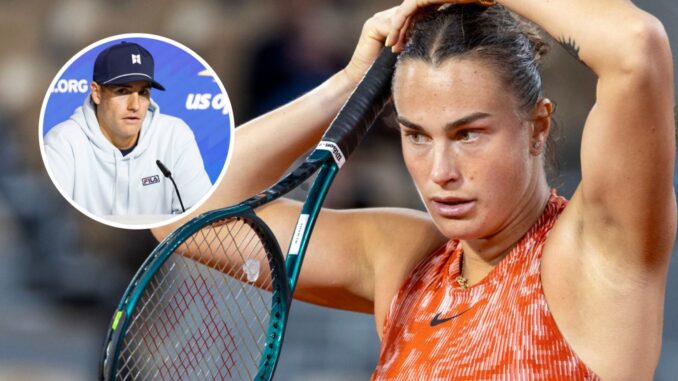
As the tennis world turns its attention to the 2025 French Open, set to commence on May 25 at Roland Garros, a spirited debate is brewing around world No. 1 Aryna Sabalenka’s prospects on the Parisian clay. John Isner, the retired American tennis star and former world No. 8, has stepped into the fray, pushing back against what he perceives as misguided chatter about Sabalenka’s readiness for the clay-court major. Known for his booming serve and candid commentary, Isner’s defense of Sabalenka underscores her formidable talent and adaptability, setting the stage for a compelling narrative as the Belarusian aims to claim her first Roland Garros title.
Sabalenka’s 2025 season has been a masterclass in dominance. With titles in Brisbane, Miami, and a third Madrid Open crown on May 3, where she dispatched Coco Gauff 6-3, 7-6, she’s cemented her status as the WTA’s top player. Her powerful game, led by a forehand averaging 129 kph and a backhand that thrives on clay’s slower bounce, has silenced doubters who once questioned her consistency. Yet, recent talk—sparked by her limited clay-court action in Stuttgart, where she advanced to the quarterfinals without playing due to an opponent’s withdrawal—has cast doubt on her French Open preparation. “She’s not had enough matches on clay,” some critics have argued, suggesting her lack of early-season dirt-court reps could hinder her against clay specialists like Iga Swiatek or Jelena Ostapenko. Isner, however, isn’t buying it. “I don’t agree with what I’m hearing about Sabalenka,” he said on a recent Tennis Channel broadcast. “She’s the best player in the world right now, and her game translates anywhere.”
Isner’s confidence stems from Sabalenka’s evolution into a complete player. Once known for emotional volatility, she’s developed a steely resolve, evidenced by her 33-1 Grand Slam hard-court record since 2023 and a 9-9 finals record after Madrid. Her clay credentials are equally impressive: seven finals, including two titles, and a 2023 Roland Garros semifinal run halted only by Karolina Muchova’s stunning comeback. “Physically I’m strong, and I’m not rushing the point,” Sabalenka said after her Miami win. “I know I can stay in the point for how long I need. I have got everything to be a good player on clay.” Isner echoed this sentiment, noting her improved movement and defensive variety. “Her power is unreal, but she’s added so much to her game—drop shots, angles, patience,” he said. “People forget she was one point from the final here two years ago.”
The skepticism about Sabalenka’s clay form overlooks her adaptability. In Madrid, she reeled off 17 consecutive points against Gauff, showcasing her ability to dominate on the surface. “I’m super happy that I was able to handle my emotions at the end of the second set,” she said post-match, highlighting her mental growth. Isner, who faced similar scrutiny over his own clay-court game during his career, believes the narrative around Sabalenka is unfair. “She’s not Swiatek on clay, but who is?” he quipped, referencing the Pole’s four Roland Garros titles. “Aryna’s got the tools to go all the way, and writing her off because of one quiet week is lazy.”
Sabalenka’s path at Roland Garros won’t be easy. Swiatek, the reigning champion, remains the clay-court queen, while Ostapenko, who bested Sabalenka in Stuttgart’s 2025 final, and rising star Mirra Andreeva, who upset her in last year’s quarterfinals, pose significant threats. Yet, Isner’s endorsement carries weight, reflecting Sabalenka’s ability to defy expectations. As she prepares for the Italian Open, where she reached the 2024 final, Sabalenka is focused on peaking in Paris. Her journey, marked by resilience and a refusal to be pigeonholed, promises to captivate fans. With Isner in her corner, Sabalenka’s French Open campaign is shaping up as a chance to prove the doubters wrong and etch her name into clay-court history.
Leave a Reply